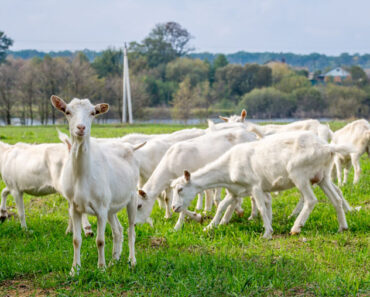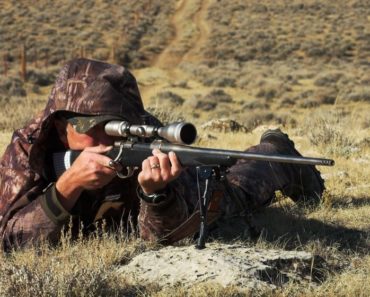Surveying the vast realm of survival equipment, stockpiles, skills and knowledge, preparedness can feel daunting or even overwhelming … especially for those just getting started. Spending too much time worrying about things we have no control over can “feed our problems and starve our opportunities.” Pouring energy into problems empowers them and makes them bigger. It’s a recipe for becoming a reactive approach to survival based in fear. Unfortunately, that’s how the U.S. has chosen to prepare, as a nation. We don’t prepare for threats until they happen. Then we look for a scapegoat to blame (Hurricane Katrina) and use fear to rob citizens of rights and freedoms (9/11).
Tackling small survival goals is about “starving our problems and feeding our opportunities.” It’s about proactively doing what we can do to prepare right now, not out of fear, but simply because it’s the responsible thing to do.
Just Starting Out? Gather What You Need to Survive Just 48-Hours
If you don’t already have a Go Bag, put one together. Don’t buy anything yet, just gather what you need from around your home. What do you need to survive just 48-hours?
- Container – Start with a container. A shoulder bag or small backpack is perfect for most folks, but it could be as simple as an old sheet or a shopping bag if that’s all you have. Keep this kit portable, because you can’t know ahead of time if will be best to shelter in place or to bug out in order to survive.
- Security/Situational Awareness – What do you reach for when you hear a bump in the night and need something concealable? A handgun (or pepper spray if that’s all you have) and a flashlight. Also pack a spare magazine, a headlamp and extra batteries for both lights if you have them.
- Medical – A small first aid kit and compact trauma kit would be perfect, but anything that can be used to stop bleeding is a start. Even an old bedsheet and a roll of duct tape are a start.
- Shelter, Fire, Camp Tools, Cordage – A watch cap, gloves, light blanket, bivvy sack, emergency blanket, tinder (small tube of white petrolatum and some medical cotton or some jute twine with candle was rubbed into it), a way to start a fire (matches, lighter, candle stub), and 550 cord or similar cordage. You will also want a fixed blade knife (a small kitchen knife will do, but you’ll need to improvise a sheath for it … or you can substitute a pocketknife if that’s all you have), a multitool or Swiss army knife if you have one.
- Water & Hygiene – Metal water bottle or a canteen with a canteen cup is perfect because they can be used both to store and boil water. Even a can and a plastic bottle will do in a pinch. You don’t need much hygiene gear to survive 48 hours, but you will need to relieve yourself, so pack toilet paper or a soap, a washcloth and a squirt cap for a water bottle in a zip seal bag.
- Food – Grab some shelf-stable foods that can be prepared without cooking like peanut butter, granola bars, or shortbread cookies. Compact alcohol stoves are cheap to run and can be improvised from aluminum cans. There are plenty of “how to” videos on YouTube.
- Self-Recovery – Map and compass. If you don’t have a map, you can tear a city map from a phone book. Button compasses are generally inexpensive or improvise a general direction compass. You’ll also want cash. Small bills are best.
- Rescue – Pack a whistle and a mirror to attract attention. The mirror will also come in handy for self-assessing injuries and performing first aid on yourself.
- Communications – Your cellphone, a solar battery bank (if you have one) and charging cable, a small transistor radio will keep you informed. Pack an ear bud for the radio, if you have one. It will help conserve the batteries.
The point here is to not let money be an obstacle to preparedness. When finished, you will have a solid core for a survival kit. Then you can add to it to increase capability and sustainment time.
A comprehensive survival kit can be improvised from materials that can be found dumpster diving. Being able to improvise everything you need to survive means that you will be able to survive even if you are forced to start over with nothing. If you have a few bucks, thrift stores are a great source for candles, knives, pots, clothing, footwear, sleeping bags, survival manuals … even bows and arrows.
People are forced to start over all the time. They store all their material possessions under one roof and then lose them in a fire, tornado, flood, hurricane, or war. All sorts of people are able to start over with nothing and are not only are they just fine, but they also often grow stronger, and are better off in the end. This should cause us to question our attachment to material possessions.
Stockpiling is an important part of survivalism, and emergency preparedness, but the more we know and the more capable we become, the less we need and the better able we become to start over, if necessary.
Go through what you already have before buying anything. Inventory it and organize it. It is common for preppers to “impulse buy” survival gear. As they experiment with it, they find that much of it isn’t that great, so they buy better gear to replace it. Because of this, they end up with multiple kits or packs with essentially the same stuff in each one, the main difference being quality.
This results in waste in the form of over-redundancy. If you are new to preparedness, be aware of this pitfall. Buy only what you need and buy the best tools you can afford without going into debt. This will save you money in the long run.
Adopting a modular, layered approach to your survival stockpile will save money too, and will ensure that your stockpile is adaptable. And adaptability, not strength, is the key to survival.
Beef Up Your Food Storage, with Just Two Cans a Month
Grab two #10 cans of freeze dried or dry packed food each month when you buy groceries. For most folks, that’s one can per paycheck. It may not seem like much, but 12 #10 cans is two cases of food, and freeze-dried foods (and even some dry packed foods) have a shelf life of more than 30 years when properly stored. While it might seem like a snail’s pace, you’ll have a year’s supply of food in less than 5 years.
If you are a young person, five years might seem like a really long time, but it’s not. I have been storing food for more than 35 years, so I am rotating out the first freeze-dried foods that I bought. If I had stored two #10 cans a month, I would have more than two years of food storage for three people or a year’s supply for seven people.
Sound like a lot? Not really. In long term disruption, it could be 9 months before your first harvest, so a year’s supply of food gets you to the next harvest. A two year’s supply will get you through one bad harvest.
Plant a Pot!
Less than 2% of Americans grow any of their own food at all. By planting just one pot or one square foot of garden, you will have started gardening, and will be on your way to being in the top 2% of Americans when it comes to food security.
Sure, it’s a modest start, but it’s so easy. If you drive to nursery right now, you could be done in 45 minutes.
You need 100-200 square feet to feed one person. That’s 2-4 5’ x 10’ raised beds. So, what’s the point of planting one pot? It doesn’t take much more time to plant a dozen pots than it does to plant one pot. The difference between planting one pot and one raised bed is mainly a question of materials.
Whether you have a raised bed or pots on a balcony, it is a simple matter for even a novice gardener to expand a small garden, turning it into a bigger one. That’s a better gardening plan than the plan I hear most often.
Know what it is? It’s to till under the lawn and plant a garden using seeds from a can, grown somewhere other than where the garden is. That’s a recipe for disaster. How come? Gardening isn’t so hard. You just need soil, seeds, water, and sun, right?
Starting with potting soil is much easier than amending native soil, and pots and raised beds typically also have better drainage. If you do use native soil, have it tested so you know how to amend it. Universities typically do inexpensive but accurate soil testing. As for seeds, you are more likely to succeed using seeds from locally grown plants that have adapted to local growing conditions of many generations, than seeds from plants grown far away.
Store Some Water
Water storage is easy. You can read about how to do it here. The important thing is to do it! If your long-term food storage is dry packed, you’ll need to soak and dried legumes and rice to make them edible and most foods will need to be cooked, which takes water and fuel. If your long-term food storage is freeze-dried, you’ll still need 90 gallons of water per year of food storage, just to cook it. You’ll also need water to drink, and for hygiene purposes.
Fill Your Gas Tank When Half Empty
Fill your gas tank more frequently. Don’t let your vehicle drop below half a tank of gas so you don’t get caught near empty and unable to fill up.
If you have the money, consider putting in an extended range main tank and auxiliary tanks. It can help eliminate some of the headaches of storing and rotating fuel. Depending on where you live, storing more than 5-gallons of fuel in cans may violate your local fire code, which is one more thing to consider when relocating. Rural areas tend to have more lax fire codes regarding storing fuel.
We had a Suburban with a 40-gallon main tank and two 20-gallon saddle tanks. We drove it 740 miles without refueling. Try that in an EV.




























